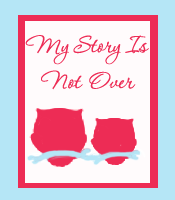I tend to get a fair amount of questions about photography, my camera, lenses, tips, and editing. Last night, I was emailing back an answer to someone when I experienced a little
deja vu- didn't I just write that exact same thing last week to someone else? So I've decided to write down some of my own personal photography rules and give you a few of my suggestions and tips.
Taking Pictures
I only have a few rules that I consistently apply when I'm taking pictures. These are just my own personal suggestions and everyone has a different style, so they might not work for everyone.
Mode
One of the main advantages to a DSLR is being able to control all aspects of how the camera takes each picture. This is why it's so important to shoot in manual mode. If you have a DSLR and you are still in the automatic modes, get out of them and try practicing with the creative modes! If you are already using the creative modes, like Av, Tv, A-Dep, etc., you're almost there- just start to practice in manual (M). I wouldn't recommend practicing at your child's birthday party- stick with what is comfortable to you in that type of situation. But the more you shoot in manual the easier it will get and the quality of your photos will greatly improve.
Flash
I never use the flash unless I absolutely have to and even then, I probably won't. If I'm in a low light situation without a tripod, I use the lens with the lowest capable f/stop and increase my shutter speed. The reason you need to increase your shutter speed, which actually lets in less light, is that it closes the shutter very quickly, meaning your picture won't be blurry (but it will be darker). If that still doesn't work, I'll bump up my ISO. The reason that's my last resort is the higher the ISO, the more noise in the picture, ie., grainy. If that still doesn't work, I will look for any available light source and try to use it to my advantage. When every available option has been tried and I still can't get a good picture, I might resort to using the flash. If you have a built in flash, this doesn't apply to you, but if yours is attachable/removable, aim the flash upwards. That should provide you with the necessary light without the full harshness a flash tends to produce.
f/stop
I prefer to shoot with the highest possible f/stop because it produces sharper and brighter pictures. A low f/stop means smaller aperture, ie., less light. Unless you are trying to take pictures of fireworks, the moon or stars, generally, in low light situations a lower f/stop is needed (with the aforementioned exceptions you will need to use a tripod and a larger f/stop) but not if you are outside on a nice sunny day. I like to go by the Sunny 16 rule of thumb: In full light, during the brightest part of the day, the best camera settings are an f/16 aperture, 1/250 second shutter speed, and 200 ISO. Using that as my go-to setting, I can then make the appropriate adjustments depending on the light I have.
Storage
(
I'm a little crazy about photo storage and archiving- I have a ridiculously deep fear of losing all my pictures, so please don't think you have to do all of these.)
Taking pictures with a DSLR gives you the option to shoot in either RAW, jpeg, or both- I always choose both. That may sound a bit redundant and like a waste of space considering RAW files are enormous. I know that the large size of the RAW file is a deterrent to many people who only have a two or four GB memory card, but there really are so many advantages to shooting in RAW and I will get to why I also do jpeg in a minute. My advice is to purchase a few of the smaller sized cards or search for some good deals and buy one that has a large capacity. I just got one that is 16GB for Christmas and I can't tell you how nice it is to not have to constantly worry about running out space and trying to delete pictures when when I should be taking them. (My 16GB was $50, which, when considering I paid $29 for my 2BG one, was a huge bargain) If you are someone who never edits their pictures, then there is no reason you need to have a RAW version of your pictures- jpeg is all you need. But, if you do edit your pictures, especially in either ACR (which comes with all editions of Photoshop) or Lightroom, you need to be shooting in RAW.
When you attach your camera's memory card to the computer, whether via card reader, internal slot or USB, it will automatically select the option Delete After Importing. I deselect that check mark right away! After all my pictures are on my computer, I then immediately upload them to two different "in the cloud" services; first to my private picasa web albums and then I pick out the ones I want to make sure get saved and upload them to either flickr or shutterfly. Finally, I save them to my external hard drive. None of these pictures have been edited yet because I like to keep one copy in their original format- which is why the extra jpeg file is needed.
The only real disadvantage to RAW files is that they need to be converted to another format before you can see them on your computer or upload them to another site; this conversion is generally done in a program like Adobe Camera RAW (ACR) or Lightroom. (There are other many other programs that also do it) Since I like to upload a "just in case something bad happens to my computer before I'm finished editing" copy of the original picture, I have to have a jpeg file or else I won't be able to upload it. I hope that makes sense!
Erasing
Once I have everything safely stored in both locations, I breathe a sigh of relief. Now comes the part you probably haven't have heard of or have been afraid to try. With your memory card back in your camera, you have two options that will erase the images; using the trash can button or reformatting. Choosing to reformat is the best option because it greatly decreases the likelihood of your card becoming corrupted and crashing. When you erase pictures with the trash can, fragments of the files are still left behind and over time, this decreases card stability.
Okay, well I think this is long enough for today! Tomorrow I will post on my rules and suggestions on editing and and equipment. Please let me know if there is anything here that needs some extra clarification and I will try to better explain myself.

 photo © 2008 dr_relling | more info (via: Wylio)
photo © 2008 dr_relling | more info (via: Wylio)









































